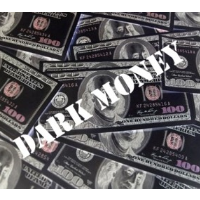Outside Groups Outspend U.S. Senate Candidates and Parties for First Time
 (graphic: Steve Straehley, AllGov)
(graphic: Steve Straehley, AllGov)
By Brennan Center for Justice
For what may be the first time, outside groups — nominally independent spenders that are free from contribution limits and can sometimes conceal their donors from the public — are outspending the parties and candidates in the battle for control of the U.S. Senate, according to a new analysis from the Brennan Center for Justice at NYU School of Law. While closely tied to the parties and candidates despite weak rules against coordination, these groups benefit from being able to raise most of their money from a handful of mega-donors.
Of the $557 million spent so far in ten key Senate contests, nonparty outside groups are responsible for $282 million, or 51 percent. In each of the four most expensive contests, in Nevada, New Hampshire, Ohio, and Pennsylvania, candidates account for 37 percent or less of total spending. Among the other findings:
• Outside spending is reaching record highs: The current record-holder for most expensive race is the 2014 North Carolina contest, which reached $39 million by the end of September and $116 million in total. Four contests are already on pace to beat that mark: Pennsylvania ($69 million by the end of September); Ohio ($49 million); New Hampshire ($48 million); and Nevada ($43 million).
• GOP winning outside money battle: Nearly 60 percent of the money spent so far in top Senate races supports GOP candidates, a reversal from 2014. Dark money spending, from groups that conceal their donors, favors GOP candidates six to one.
• Dark money spending is highly concentrated: Just three groups, One Nation, with ties to Republican Majority Leader Mitch McConnell; the Koch network’s Americans for Prosperity; and the U.S. Chamber of Commerce, account for 67 percent of all dark money spending.
• Party-affiliated groups are ascendant: Due to increased spending by outside groups affiliated with the parties, 2014’s rise of single-candidate groups has been checked. The $28 million spent this year by those groups accounts for 11 percent of the total, down from 18 percent in 2014.
“The precipitous rise of outside groups is problematic for a few reasons,” said author Ian Vandewalker, counsel in the Brennan Center’s Democracy Program. “Unlike the parties and candidates, they are free to accept donations of unlimited size and can conceal their funders from the public. So the bigger a role they play in an election, the more political power is concentrated in the hands of a few million-dollar funders and professional political operatives, with a consequent loss in power for the millions of Americans who can’t afford jumbo donations. While this problem was created in part by 2010’s Citizens United decision, the 2016 data shows we have truly crossed a new Rubicon.”
To Learn More:
Election Spending 2016: Outside Groups Outspend Parties and Candidates in Key Senate Races (by Ian Vandewalker, Brennan Center for Justice)
Once Above Politics, State Supreme Court Seats Now the Target of Big-Money Political Campaigns (by Gene Johnson, Associated Press)
As Political Campaign Spending Explodes, Disclosure Remains Hazy (by Mary Spicuzza and Jeremy B. White, Associated Press)
Millions of Dollars in Shadowy Campaign Money Fuel Presidential Campaigns (by Jack Gillum, Chad Day and Stephen Braun, Associated Press)
Unregulated Outside Spending Wins Elections: 2010 Edition (by Noel Brinkerhoff and David Wallechinsky, AllGov)
40% of Outside Campaign Money was Made Possible by Supreme Court Ruling (by Noel Brinkerhoff, AllGov)
- Top Stories
- Unusual News
- Where is the Money Going?
- Controversies
- U.S. and the World
- Appointments and Resignations
- Latest News
- Musk and Trump Fire Members of Congress
- Trump Calls for Violent Street Demonstrations Against Himself
- Trump Changes Name of Republican Party
- The 2024 Election By the Numbers
- Bashar al-Assad—The Fall of a Rabid AntiSemite






Comments